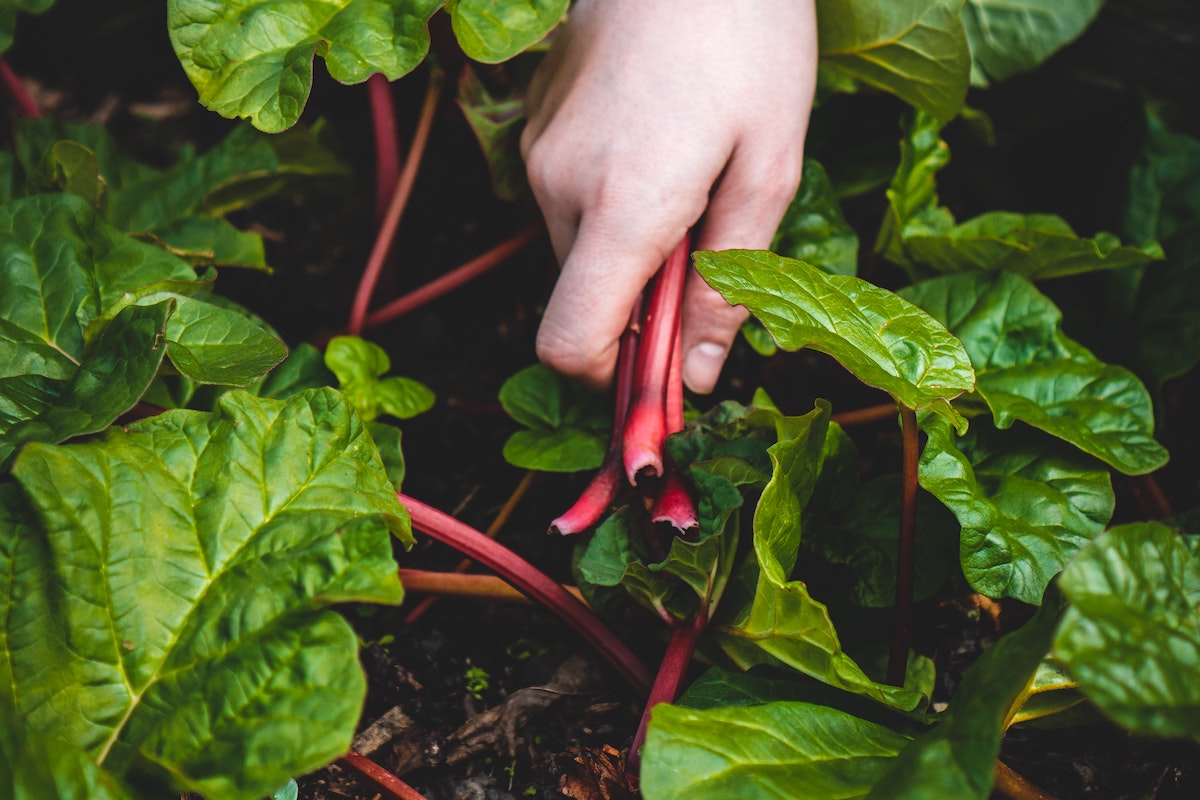April and May is the perfect time to plant a variety of fruit and veg for a summer harvest but what are the best vegetables to plant?
We’re getting a good mix of rain and shine at the moment, the chance of frost has (hopefully) passed, and things are definitely on the milder side.
It’s the perfect time of year for cultivating. As well as the weather warming up, the soil is heating up too, and it is the perfect time to get outside and sow your outdoor veggie plot from seed.
Veg such as carrots, peas and beetroot, can be sowed in late April/early May and they’ll be ready to harvest in July/August.
If you have a greenhouse or propagator, then you have a few more options, from Marrows, courgettes and pumpkins to squashes and tomatoes, and they can all be sown now too.
Personally, I don’t have that choice so it is vegetables sown directly into the ground, seed trays in the house for a few weeks or nothing in my own garden.
A few others in the Lazy Susan team are lucky to have allotments and greenhouses but they're veg for another post.
Pro Gardening Tip
Just remember that when sowing, sow the seeds in thin straight rows so that the resulting seedlings grow unimpeded and healthy. Alternatively, sow them into individual small pots containing a seed and a little multipurpose compost before transferring to your outdoor plot when they’re a little stronger.
To be honest with you, the trickiest part isn’t so much the growing, with a little TLC, mother nature will take care of that.
At Lazy Susan, we think just deciding the best vegetables to plant for summer, is sometimes the hardest part!
Our advice, especially if you’re new to veggie growing, is to start small in terms of both plot and what you grow.
Limit the type of veg you sow to easy growers such as beetroot and then introduce different varieties as you become confident.
Look at ‘Succession Sowing’ your seeds so that they’ll provide a steady supply through the summer and into autumn and you won’t have to harvest them all in one hit.
Think about how much you and your family are likely to eat and just plant what you need.
Ask yourself:
- Is it just to have enough to have fresh veg for family mealtimes and save money?
- Do you want to grow extra to give to friends and family or preserve to eat through winter?
Do a little research, establish what each seed you plant will yield and then plant accordingly. All the info will be on the packet or supplied when purchased from a good supplier.
Determine what is best planted and where in your garden/veg plot:
- How much outdoor space do you have?
- What type of soil do you have?
- What aspect is your garden?
- What is your garden's micro-climate
- Which parts are in shade and which are in direct sun?
But most importantly…
Just give it a go.
Do a little research and grow the veg that you and your family like to eat in the summer.
Lazy Susan’s favourite summer veg to plant in spring
To get you thinking about what veg to grow, the Lazy Susan team have compiled our top 10 vegetables to plant now for a summer harvest. All are easy to grow, nutritious and delicious.
1. Beetroot

Super easy to grow, Beetroot doesn’t take up too much space and, they’re perfect for beginners.
They're also nutritious, delicious to eat and so versatile that you can use them in everything from salads to cakes.
When the roots are about the size of a golf ball, they’re ready to harvest.
The video below from LearnHow2 shows you how to grow Beetroot from seed:
2. Carrots

Just like Beetroot, Carrots are super easy to grow and good for you.
Sow them directly into the ground. Make a seed drill about 1 cm deep using a trowel, sow the seeds thinly, cover and carefully give them a little water.
Carrots are tasty and versatile, and like most root veg, you can never have enough of them.
They grow best in full sun and in light well-drained soil. From seed, they should be ready to harvest in around 12 to 16 weeks after sowing.
3. Radishes

Radishes are another easy to grow vegetable that goes great in a summer salad or stir fry.
Hardy and quick to mature (around 4 weeks or so from seed), successive planting now will ensure a steady supply of fresh roots to harvest in the summer.
Radish is an excellent source of vitamin C, and it’s not just the root, you can eat the tasty leaves and stems too.
4. Spinach

Spinach gets a bit of a bad rap. However, when it is fresh from the garden it is super tasty and nutritious.
Like all on our list, it is easy to grow, and you can even enjoy harvests all year round if you grow a few different types.
The winter cultivars need a direct sunny spot, while the summer varieties prefer a little shade.
From being sown to harvesting it is usually around the 6-week mark depending on the variety.
OYR Frugal & Sustainable Organic Gardening has this great video below showing you how to grow from seed to harvest:
5. Kohl Rabi

Is it Kohl Rabi or Kohlrabi? I’m not sure but what I do know is it's also easy to sow outdoors and quick to grow in spring and summertime.
It likes lots of direct sun in a light, free-draining and well-fertilised soil.
The team at Lazy Susan find it best to start the seeds off in small pots or seed trays indoors for about four to six weeks and then pop them outside.
When harvested, chop the bulb into pieces and it makes for a wonderful crunchy snack with hummus or you can grate it into salads and slaws.
The RHS have a great article on How to grow Kohl Rabi if you want a little more info.
6. Summer Cabbage

Summer cabbage, just like Kohl Rabi, is best grown indoors if you’re planting now. Give it around 4 weeks and then transfer outside.
Sow 1 seed per section in a seed tray at about 2 cm deep in a good quality seed compost.
It is a heavy feeding plant though so you will need to add lots of garden compost or well-mulched manure into your soil before transferring outside.
You can sow them directly in the ground outside at this time of year but they take up quite a bit of space so we prefer to start them in the seed trays and transfer a few at a time.
One thing we will say about summer grown cabbages is they are so much sweeter and crunchier than anything you can buy in a supermarket or winter varieties.
7. Lettuce

Spring is the perfect time to sow lettuce as the seeds need cooler temperatures to germinate. They love full sun, moisture-retentive soil and a thin layer of compost.
Lettuce seeds grow very quickly, and on average, it will take about 40 days or so for them to reach full maturity.
However, you can start harvesting some of the baby leaf varieties much quicker than that.
The key to good lettuce in our opinion is plenty of water though. As a leafy green vegetable, without regular watering, it can become a little bitter.
8. Salad Onions

Spring onions, scallions, bunching onions or salad onions, whatever you want to call them, are delicious. Sprinkled on chilli or in a wrap. Perfect. Plus, sow the seeds into the ground and they will grow.
All they need is an open, sunny spot with rich, well-drained soil. For successive harvests over the summer, sow them now at three-week intervals.
Even if you don’t have the space to grow them outside you can grow them indoors by re-planting the roots of shop-bought spring onions in a container.
Spring onions are ready to harvest after eight weeks if sowing from seed. They’re at their best taste-wise when the plants are around 12 to 15cm tall.
9. Pansies

Technically not a vegetable but no less delicious to eat and they look great in your garden.
High in vitamins A and C, which promote a healthy immune system, they're rich in beneficial antioxidants.
You don’t need to eat too many but if you’re making a special dessert or salad then pansies make for a colourful and tasty addition.
The seeds germinate best in full to partial spring sun in moist, well-drained soil, and in summer if you remove faded or deadheads it will stimulate more flowering too.
10. Swiss Chard

Swiss Chard or leaf beet sits somewhere between spinach and kale, but we find it a little easier to grow than those two.
If the weather is a little dry or you forget to water it is less likely to ‘go to seed’ and you get a crop that can be harvested for longer.
It will tolerate partial sun but is best sown in an area with full sun, and it generally prefers a slightly acidic to neutral soil with a pH level between 6 and 7.
Chard is one of the more attractive veg plants with its bright coloured leaf stalks and our preference is to sauté and have it on a veggie pizza.
A Thorny Pot has made this great video below that shows you how to grow Swiss Chard from seed to harvest in the form of a week by week diary:
If you think we’ve missed any vegetables to plant now for the summer, then please drop them in the comments below or tag us in a post on Facebook or Instagram @lazysusanfurniture!



